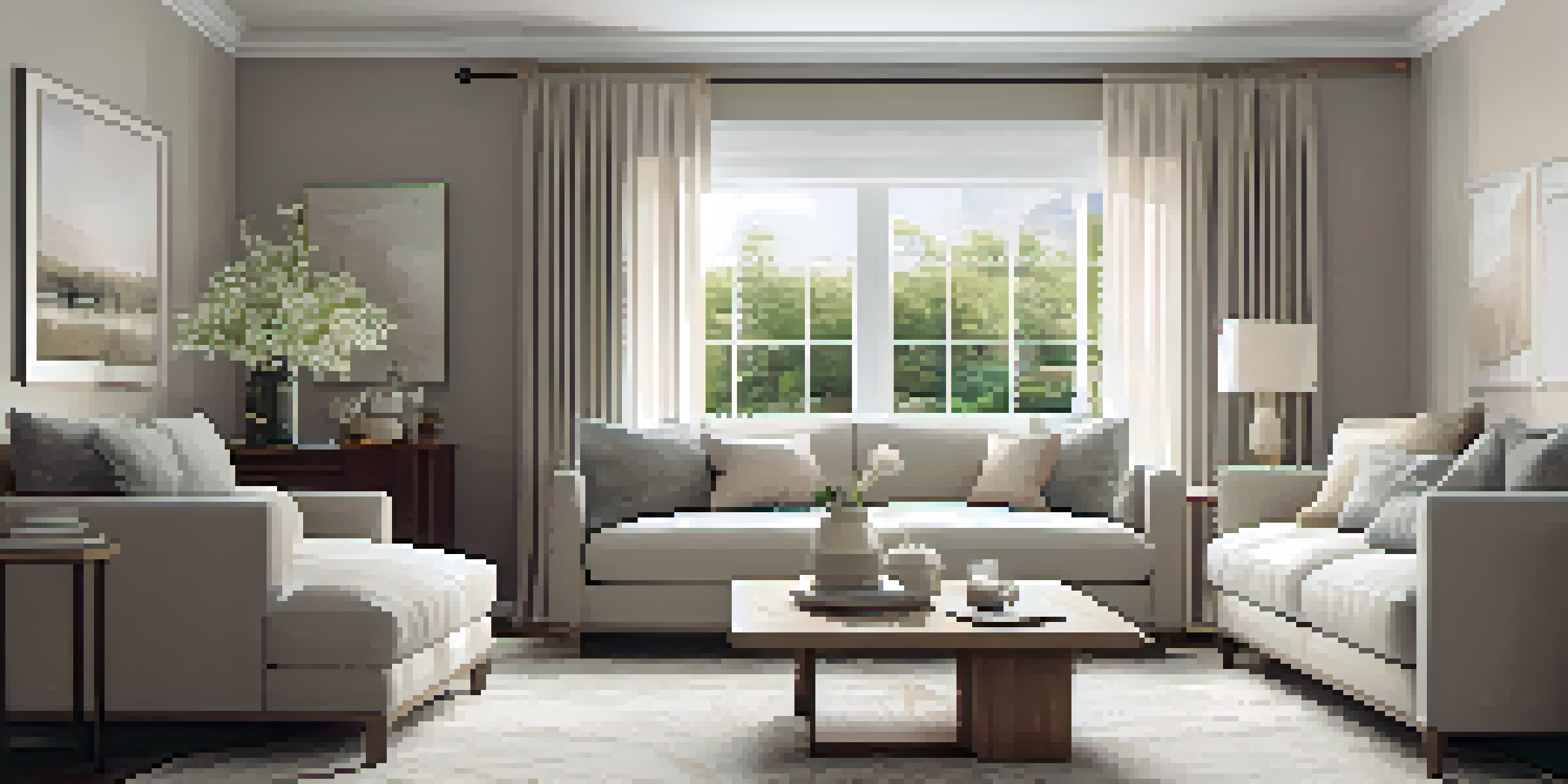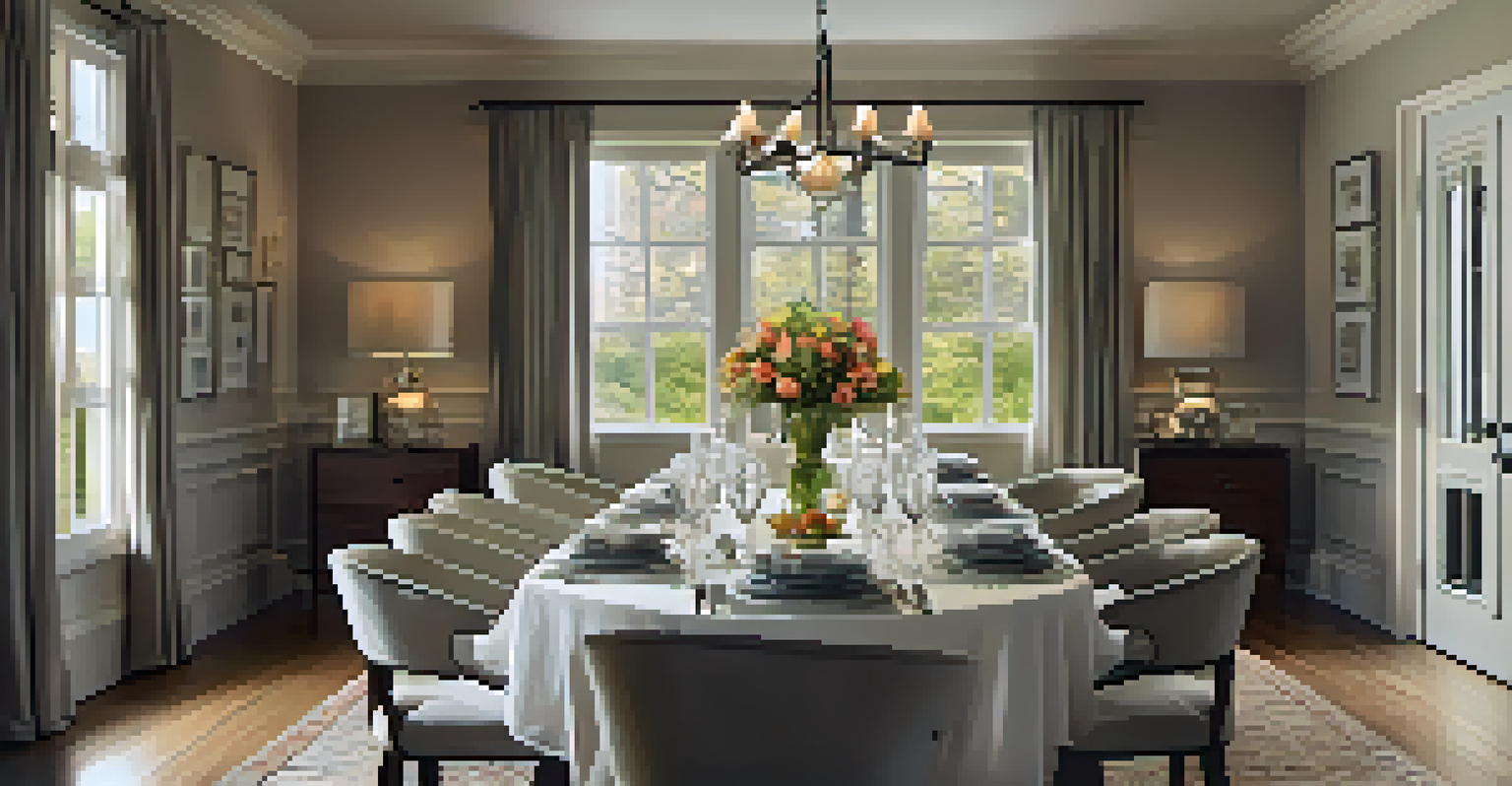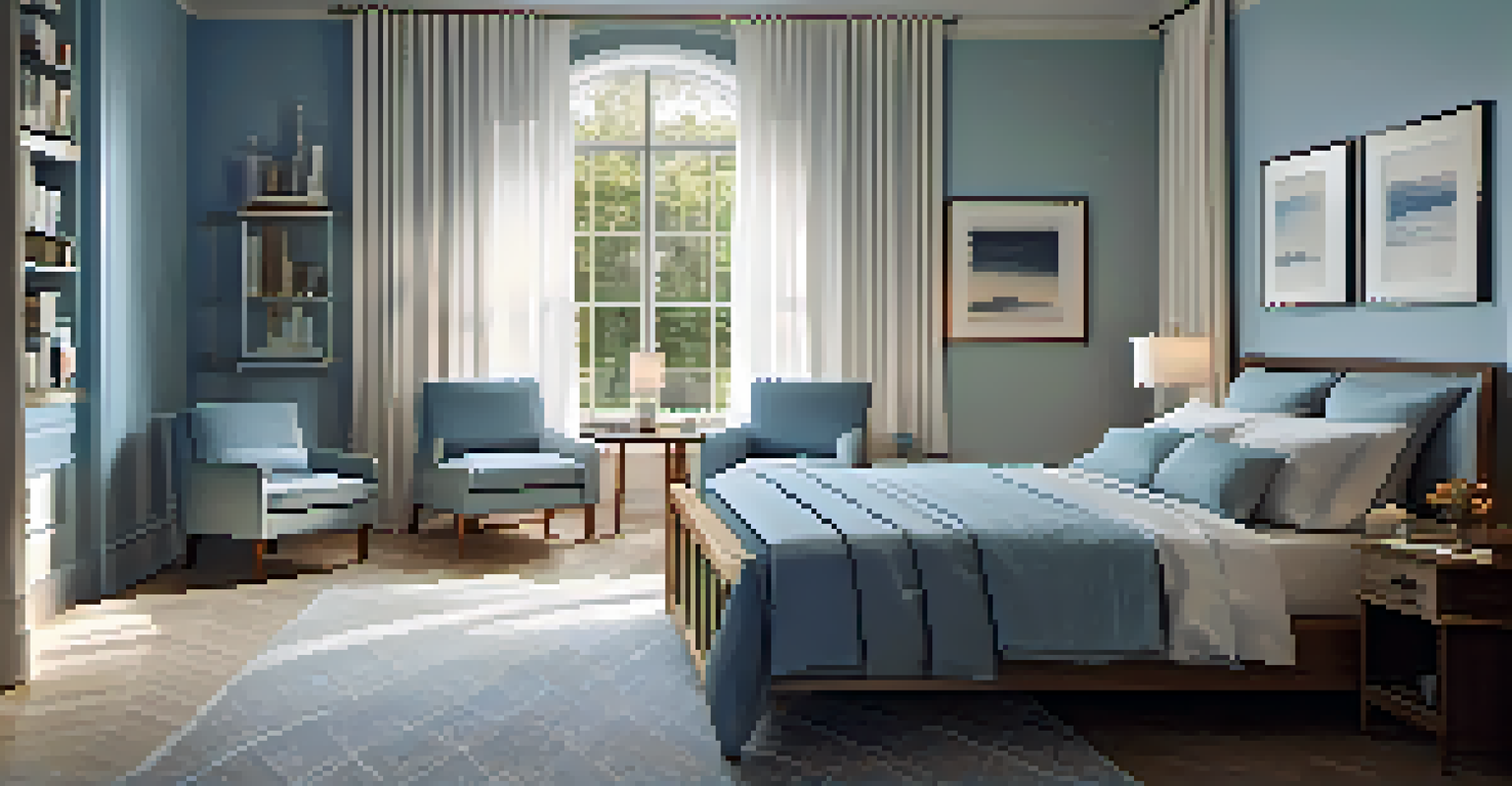The Psychology of Space: Staging Your Home for Buyer Comfort

Understanding Buyer Psychology in Home Staging
When it comes to selling a home, understanding buyer psychology is crucial. Buyers make emotional decisions, often influenced by how a space makes them feel. A well-staged home can evoke positive emotions, making it easier for buyers to envision themselves living there.
Home staging is about creating a lifestyle that buyers can envision themselves living in.
Consider that first impression; it can set the tone for the entire viewing. Buyers often form opinions within seconds, so creating a welcoming atmosphere is key. This can be achieved through thoughtful décor choices and a clean, organized space that invites exploration.
Ultimately, staging is about creating a narrative. A potential buyer should be able to picture their life unfolding in your space, from hosting dinner parties to relaxing on weekends. The more relatable the environment, the more likely they are to feel at home.
The Impact of Space Perception on Buyer Decisions
The way a space is perceived can significantly influence a buyer's decision. Spaciousness or the illusion of space can make a home more appealing. Techniques such as decluttering and strategic furniture placement can help create an open and inviting atmosphere.

Moreover, lighting plays a pivotal role in how space is perceived. Natural light can make rooms feel larger and more welcoming. Using lighter colors on walls and furnishings can also enhance this feeling, making spaces feel airy and uplifting.
Emotional Appeal in Home Staging
Staging a home effectively taps into buyer emotions, helping them envision their lives in the space.
Incorporating mirrors is another effective strategy. They can reflect light and create an illusion of depth, making even smaller spaces feel larger. This simple trick can transform how buyers perceive the overall space.
Creating Emotional Connections Through Staging
Emotions are at the heart of the buying process. Buyers want to imagine themselves in a space that feels like home, which is where staging comes into play. Personal touches, such as cozy throws and inviting scents, can evoke warmth and comfort.
People buy based on emotion and justify with logic.
Storytelling through décor can help potential buyers connect on a deeper level. For instance, setting a dining table can spark visions of family gatherings and celebrations. This subtle cue encourages buyers to envision their lives within the home.
Additionally, staging should appeal to the senses. Soft music, pleasant aromas, and a clean environment can create an inviting atmosphere. These sensory experiences can leave a lasting impression, enhancing the emotional connection to the space.
The Role of Color Psychology in Home Staging
Color plays a significant role in how we perceive space and can even affect our emotions. For instance, blues and greens are calming colors, while yellows can evoke happiness and energy. Choosing the right colors for staging can enhance the overall ambiance of your home.
Moreover, neutral colors often work best for staging. They allow potential buyers to envision their style and décor in the space. A neutral palette can create a blank canvas, making it easier for buyers to imagine their personal touches.
Perception of Space Matters
The arrangement of furniture and use of light can significantly influence how spacious and inviting a home feels.
Accent colors can also be strategically used to draw attention to key features. A bold piece of art or a vibrant throw pillow can create interest and highlight the home's character. This careful balance of color can significantly influence a buyer's perception.
Staging Furniture for Optimal Space Utilization
Furniture arrangement can dramatically affect how a space is perceived. Properly staged furniture can guide buyers through the home and create a natural flow. It’s essential to arrange pieces in a way that highlights the room's best features while maximizing space utilization.
Consider using fewer, larger pieces instead of many smaller items to create a sense of openness. This can help rooms feel more spacious and less cluttered. Additionally, ensuring pathways are clear can enhance the buyer's experience during their visit.
Don't forget about functionality! Showcasing how each area of the home can be used—like a cozy reading nook or a productive home office—can inspire buyers. This demonstration of potential uses can make the home feel more valuable.
Scent and Ambiance: Enhancing Buyer Experience
The sense of smell is a powerful trigger for memories and emotions, making it a critical element in home staging. A pleasant scent can create a welcoming environment and leave a lasting impression on potential buyers. Simple touches like freshly baked cookies or subtle essential oils can work wonders.
Creating a cozy ambiance can also be achieved through lighting. Soft, warm lighting can make spaces feel more inviting, while harsh fluorescent lights can have the opposite effect. Consider using lamps and dimmers to set the right mood during showings.
Cleanliness Enhances Buyer Appeal
A clean, decluttered home not only looks appealing but also conveys care, making it more attractive to potential buyers.
Additionally, maintaining a clean and tidy space is essential. A well-kept home not only smells better but also shows that the property has been cared for. This attention to detail can reinforce a buyer's positive feelings about the home.
Final Touches: The Importance of Cleanliness and Decluttering
Cleanliness is fundamental in home staging. A spotless home conveys care and attention, making it more appealing to potential buyers. Simple tasks like deep cleaning carpets and wiping down surfaces can make a significant difference.
Decluttering is equally important; it allows buyers to envision their belongings in the space. Removing personal items, excess furniture, and knick-knacks can create a more open, inviting environment. This also helps highlight the features of the home that matter most.

Finally, consider adding a few carefully chosen decorative items to enhance the space. Fresh flowers, a few well-placed books, or tasteful art can add personality without overwhelming. These finishing touches can create an inviting atmosphere that resonates with buyers.